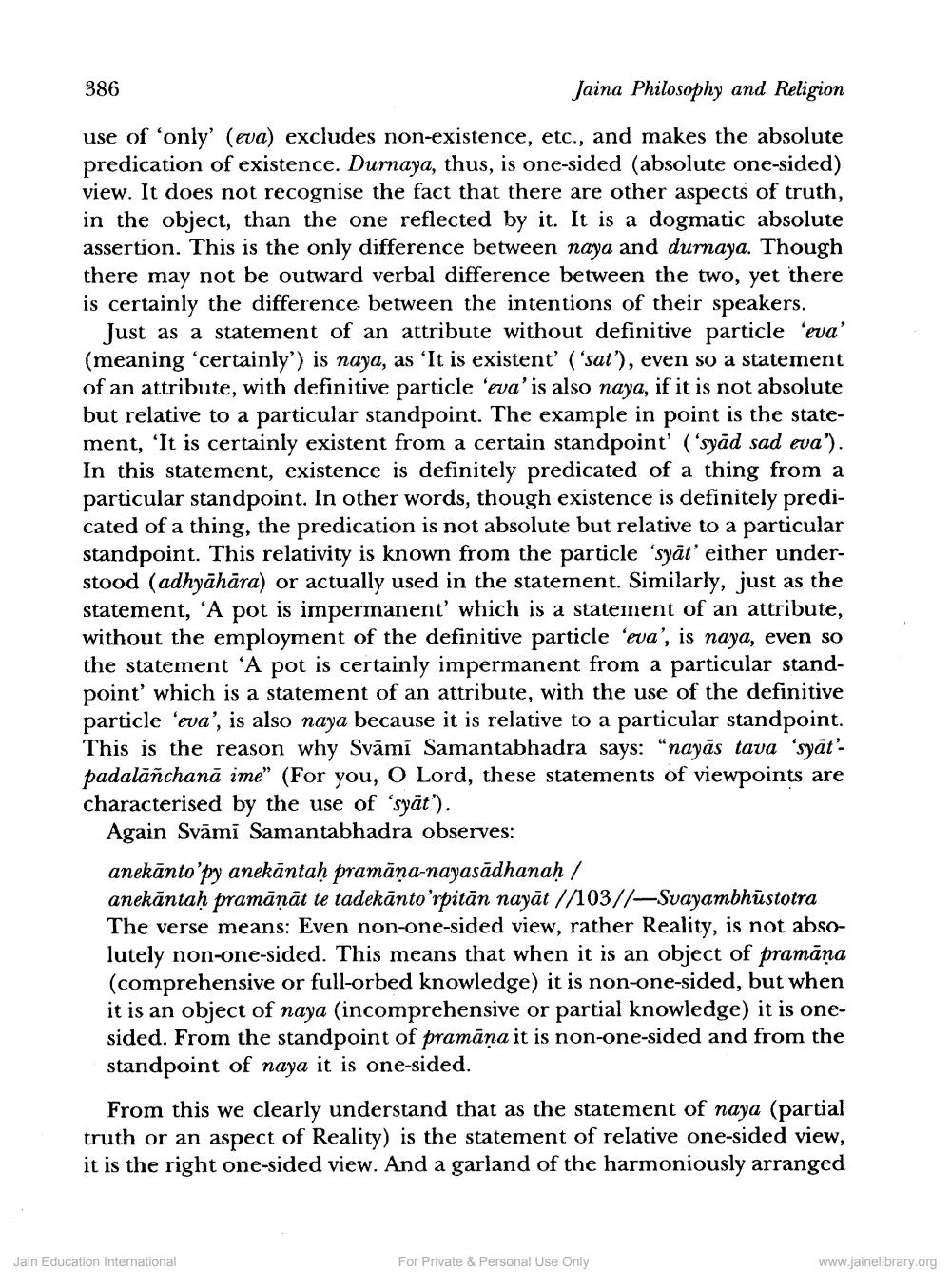________________
386
Jaina Philosophy and Religion
use of 'only' (eva) excludes non-existence, etc., and makes the absolute predication of existence. Durnaya, thus, is one-sided (absolute one-sided) view. It does not recognise the fact that there are other aspects of truth, in the object, than the one reflected by it. It is a dogmatic absolute assertion. This is the only difference between naya and durnaya. Though there may not be outward verbal difference between the two, yet there is certainly the difference between the intentions of their speakers.
Just as a statement of an attribute without definitive particle 'eva' (meaning certainly') is naya, as 'It is existent' ('sat'), even so a statement of an attribute, with definitive particle 'eva'is also naya, if it is not absolute but relative to a particular standpoint. The example in point is the state ment, 'It is certainly existent from a certain standpoint' ('syās sad eva'). In this statement, existence is definitely predicated of a thing from a particular standpoint. In other words, though existence is definitely predicated of a thing, the predication is not absolute but relative to a particular standpoint. This relativity is known from the particle 'syāt' either understood (adhyāhāra) or actually used in the statement. Similarly, just as the statement, 'A pot is impermanent' which is a statement of an attribute, without the employment of the definitive particle 'eva', is naya, even so the statement 'A pot is certainly impermanent from a particular standpoint' which is a statement of an attribute, with the use of the definitive particle 'eva', is also naya because it is relative to a particular standpoint. This is the reason why Svāmī Samantabhadra says: "nayās tava 'syāt'padalāñchanā ime" (For you, O Lord, these statements of viewpoints are characterised by the use of 'syāt').
Again Svāmi Samantabhadra observes:
even
partic
" the
anekānto'py anekāntaḥ pramāna-nayasādhanah / anekāntaḥ pramāņāt te tadekānto'rpitān nayāt //103/1-Svayambhūstotra The verse means: Even non-one-sided view, rather Reality, is not absolutely non-one-sided. This means that when it is an object of pramāna (comprehensive or full-orbed knowledge) it is non-one-sided, but when it is an object of naya (incomprehensive or partial knowledge) it is onesided. From the standpoint of pramāna it is non-one-sided and from the standpoint of naya it is one-sided.
From this we clearly understand that as the statement of naya (partial truth or an aspect of Reality) is the statement of relative one-sided view, it is the right one-sided view. And a garland of the harmoniously arranged
Jain Education International
For Private & Personal Use Only
www.jainelibrary.org




